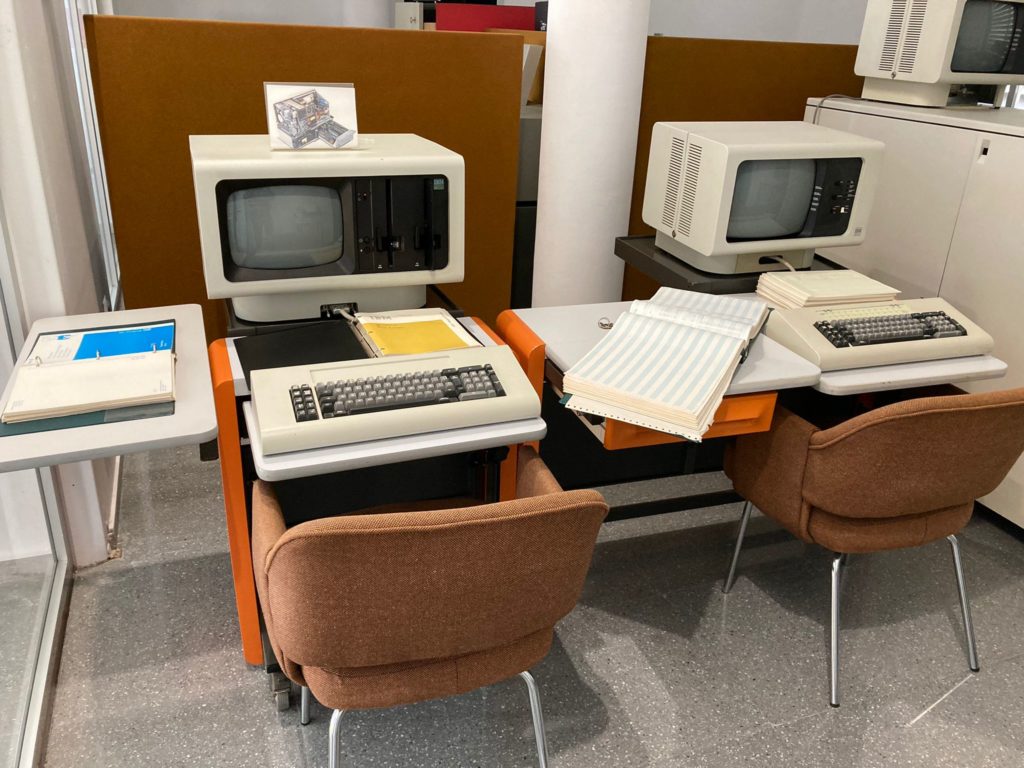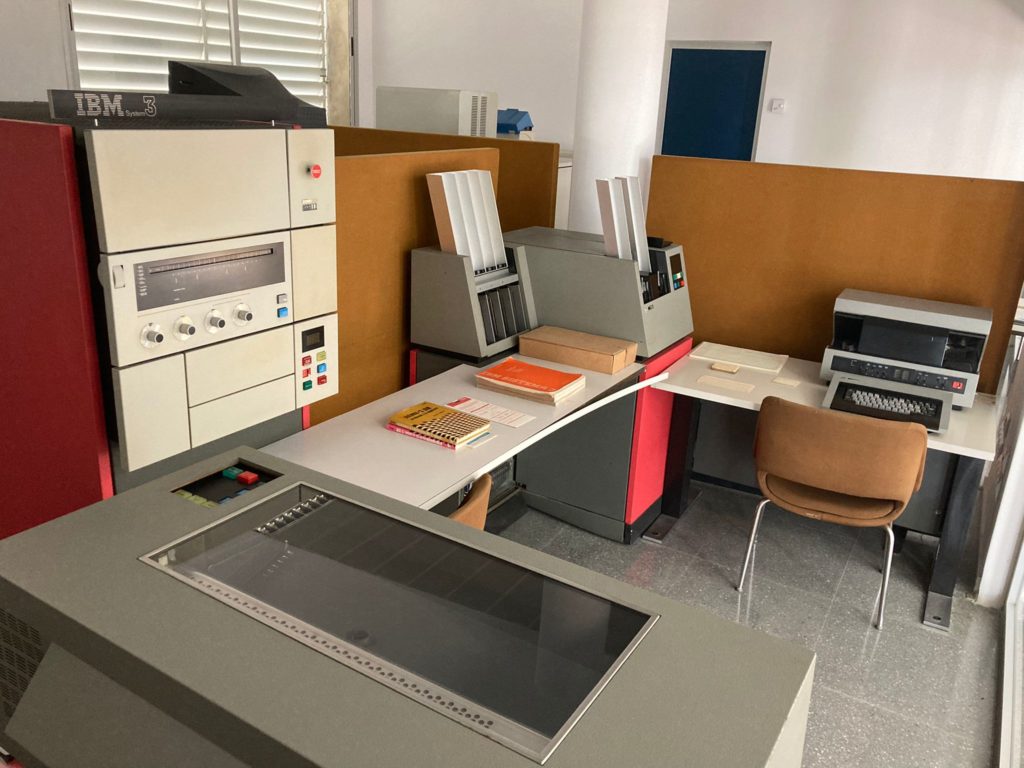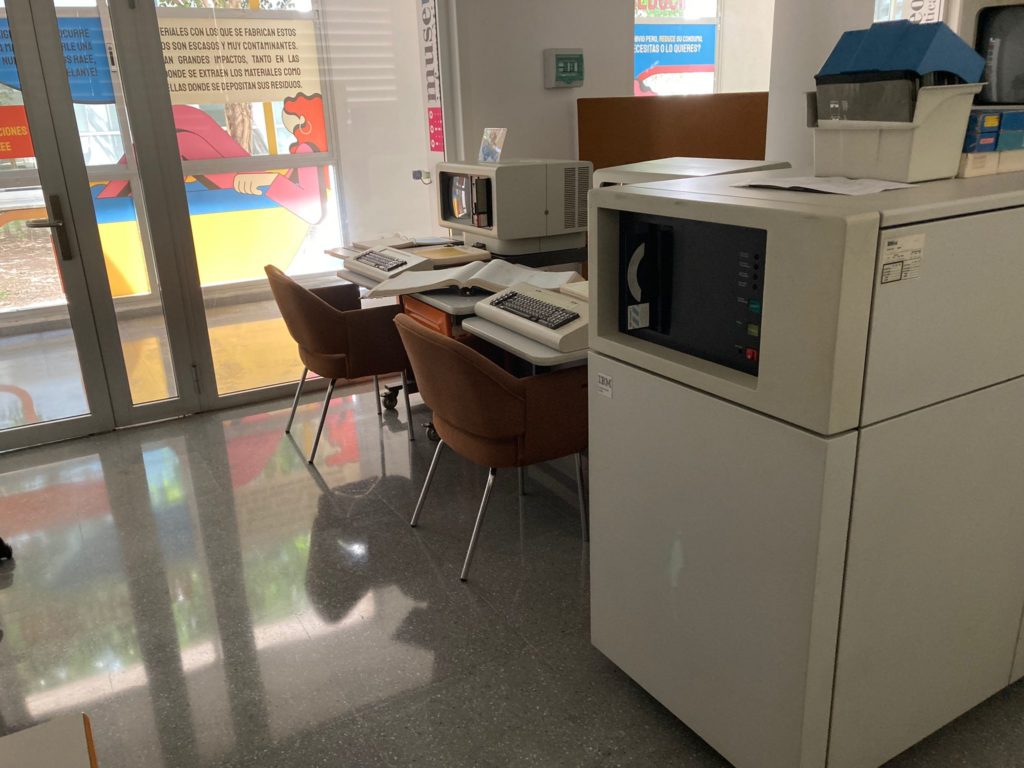




Until the 1960s, computers, due to their size, need large infrastructures and technical staff for their installation and maintenance. These computers, also called “mainframes”, were usually run as renting regime and used by public and private institutions to process huge volumes of data, such as the census or airline reservation systems. It is then when the concept “minicomputer” appeared, as a reduced and more affordable version for the medium-size enterprise. The impact of this type of computers on the business activity was enormous, since it allowed reducing the time needed to process data from weeks in a few hours, thereby improving the decision processes and saving costs.
A consensus opinion of those years determined that a minicomputer was “a machine with an input-output device such as a teleprinter or punched cards, with at least 4K words of memory, which is capable of running high level programs (like BASIC or FORTRAN) and costing less than 25,000 dollars.” This price represented the cost of a house in those days. Normally, the input-output configuration consisted in a tape or punched card reader and a line printer, as well as other external devices like classifiers and computer card punches. The main memory was implemented with ferrite cores.
There is no agreement on which was the first computer of this typology. Different companies developed this type of machines: the first minicomputers were the CDC (Control Data Corporation), like the CDC-160 or the famous PDP-8 and PDP-11 of DEC (Digital Equipment Corporation). But there were also other companies, such as Data General or the less known Wang Laboratories. IBM, the leader company on the market, launched its System/3 in 1969, the year when Apollo 11 landed on the Moon, and developed an interesting line of products (System/32, System/34, System/38, …), which reached its highest point with the launching of the IBM AS/400 almost 20 years later.
The IBM System/3 became a milestone in the design of punched cards, since it used a new and more compact format and at the same time with more memory capacity. It could have up to 32K memory positions and the basic leasing price was about 1.000 dollars per month, including update and maintenance service. Auxiliary elements, such as classifiers and programs were rented separately. The computer, which was located in a specially designed room, was surrounded by a large number of persons and professions: the maintenance operator, who turned it on during the day and turned it off at night; the analyst, who designed the complete management system for the company; the programmer, who wrote the specific code and adapted it to templates. Finally, the puncher (who used to be women) transferred the code to the punched cards. The operation mode consisted of a program which cyclically read codified data from a series of cards and process them to obtain some type of summary, which was printed via output (printer or card punch).
This processing mode also included program compilation. Thus, using the language compiler RPG II of the IBM System/3 entailed several phases. First, the compiler, followed by the source program, was loaded into the system based on the cards: the result was an “object” program which was punched in a new set of cards. The process was repeated in a second phase: the compiler processed this object program and obtained a set of cards with the executable program. Finally, to execute this last program, it must be introduced again in the computer, this time followed by the set of cards with the data. The time needed to carry out this task for a medium size program and with lack of errors was an hour.
The decline of minicomputers was due to several factors: the emergence of microprocessors and semiconductor memories of low cost, the availability of operating systems like Unix and local area networks of easy installation, but also the users’ desire to abandon the dependence of somewhat inflexible manufacturers. As a result, at the end of 1980, users started to replace their minicomputers by other computer systems based on interconnected workstations, file servers and personal computers.
